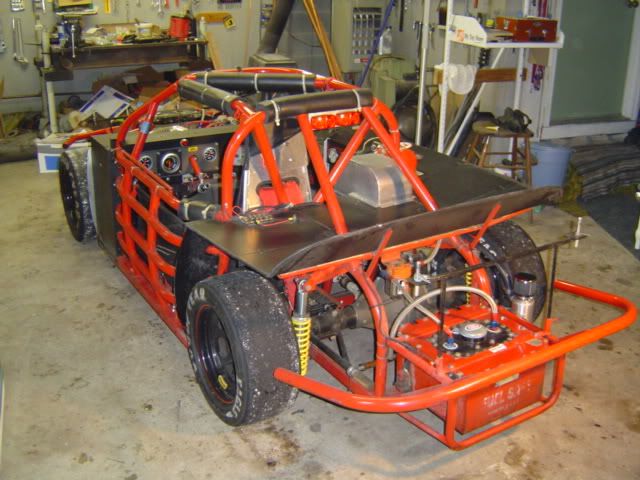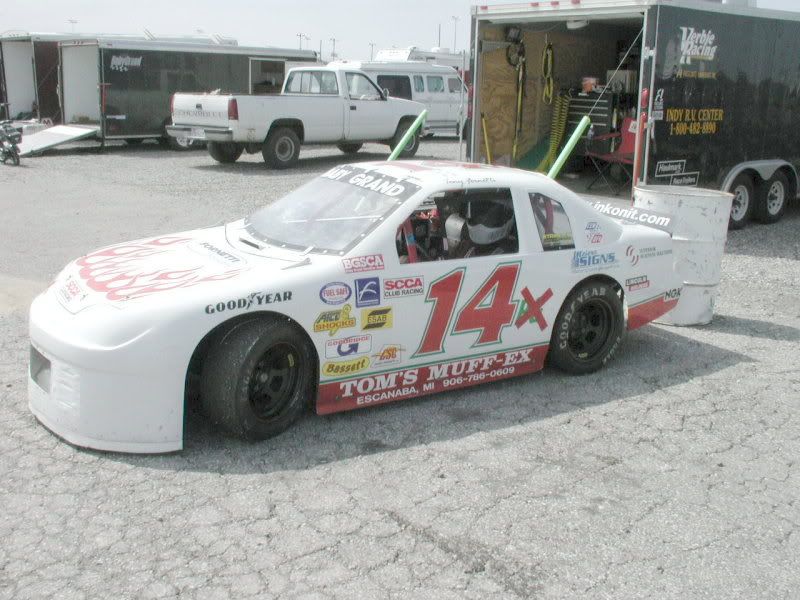No, not pianos.
Anyone know anything about NASCAR Baby Grand cars? how similar are they to Dwarf/Legends?
No, not pianos.
Anyone know anything about NASCAR Baby Grand cars? how similar are they to Dwarf/Legends?
They started out as large version of a Legends cars with different body's. There a spec class you must buy a titled chassis from 600 racing or lic dealer to run. Not cheap but fun i'm sure.
44
Baby Grand stock cars are scaled down versions of Cup cars. They are in no way associated with 600 racing or Legends cars. One quick internet search on "Baby Grand stock car" will fill you in on everything you need to know. http://babygrandracing.com/
Back in the day (80's??) NASCAR Baby Grands were based on 4 and V6 powered full bodied cars. IIRC, they had their own race at Daytona Speedweeks as well as other NASCAR venues. There were a cpl area NASCAR sanctioned 1/2 mile tracks that sent top regional drivers there (4-cyl. only). I lost track of the 4 vs V6 rules. The 1300cc Yamaha engined cars you google now are not the original Baby Grands.
The series that ran at Daytona was the Goody's Dash Series. The Goody's Dash Series has evolved into ISCARS, under the ASA banner. Those cars are not Baby Grand cars. The series is still around, but not what it was with a Nascar sanction. Again, the Dash cars are not Baby Grands, either. There's also the Allison Legacy cars, Indoor arena cars, and probably a few more similar cars to be confused with. http://www.iscarsonline.com/news-new.asp
I raced one with BGSCA and SCCA for about 5 years. Fun cars and I think the water cooled versions would be more reliable than our air cooled car. We had a Hank Scott built motor and ran regional club races all over the midwest. Sold it when my first daughter was born.
The Winters quick change rear end allowed us to gear the car for any track in about 15 minutes. We also ran the oval at IRP and some other bull ring short tracks near my house. Fun times.
Pics:


Didn't IMSA run a Baby Grand series ('70s-ish?)?
(From Wikipedia...see, I'm not as senile as I thought I was:) The IMSA RS Series (abbreviation for Radial Sedan) began as the Baby Grand Series, in 1971. Originally sponsored by B.F. Goodrich (therefore known as Goodrich Radial Challenge) until they dropped sponsorship midway through 1975 (or 1976) and then by Goodyear (becoming the Goodyear Radial Challenge), and later as Champion Spark Plug Challenge.[citation needed]
The initial race held was in 1969 at Talladega Superspeedway Road Course, Racey Frizzell was first overall in an Alfa Romeo sedan;[citation needed] the Series first year was actually 1970 with only two races, the inaugural race was at the newly constructed Summit Point Motorsports Park on Memorial Day weekend, Racey Frizzell was first overall in an Alfa Romeo Sedan; the second race was held at the Montgomery Speedway, Alabama, Red Farmer won in a specially prepared Datsun 510. Racey didn't fare too well having to drive against the local 4 Cylinder "beater class" cars brought in to fill out the field, with their protruding wheels rubbing Racey's "immaculate" Alfa Romeo, infuriated, he quit and never ran another IMSA RS race after that.[11] Steve Coleman, who competed in both 1970 races, was the only driver that ran both of these races and then continuously in the Series throughout the early years; 1970–1977
The idea was to attract racers who did not have the budgets that was required in the GT category as well as an emphasis on compact sedans such as the AMC Gremlin and the Opel Manta.[citation needed] There were two classes from 1970 through 1973: Class A for under two liters and under 1.6 liters with overhead cam and Class B for over 1.6 L with overhead cam and over two liters up to the largest permitted engine being the 232 cubic inches (3.80 l) AMC Gremlin. In 1974 all cars were placed in one class, with the only parity for the smaller engines being free carburetion for under 1.6 liters. Limited preparation was permitted, and since the entrants were meant to be street-driven race cars, the original rules required the retention of headlights, seats, upholstery, window cranks, stock brakes and original springs and radial tires. Only the exhaust systems and shock absorbers were free. Later rules regarding headlights, seats, upholstery, window cranks, original springs, and other stock elements were loosened up somewhat. From the beginning, engine modifications similar to Sports Car Club of America B Sedan were permitted, with the main difference being that over-boring cylinders was not allowed, and stock carburetors being required, but modifications allowed. In addition, springs and alignment were free.[11] The series was loosely based on rival SCCA Trans-Am's Two-Five Challenge rules.[12][13]
You'll need to log in to post.